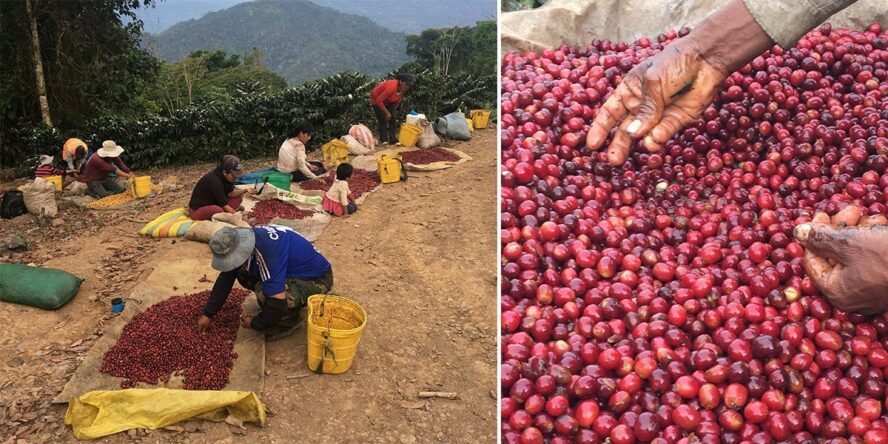Bolivia, the land of extremes and the third stop on our trip to South America last October. Arriving in El Alto, the city that hosts La Paz Airport at approximately 4,150 meters above sea level, welcomes us like we're landing on the moon. Your body experiences a reversal of water and air levels due to the pressure and lack of oxygen. This change can cause the phenomenon known as soroche, which in our case we combated at 4 a.m. with the taxi driver's good humor, a good chat about the inhabitants of Cochabamba, and a cup of coca tea upon arrival at the hotel. A miracle cure.
The following morning, we headed to our base camp in Caranavi, on a journey through the Andes mountain range, reaching the highest point at the summit where we began our descent. The vegetation appears in its supreme magnificence as we approach the Yungas Mountains. Forests flooded with coca plantations accentuate a landscape where the reality of the greater profitability for producers of the psychoactive leaf compared to coffee is palpable, undermined by ridiculously low stock market prices, the vast majority of which do not even cover production costs.

Despite the differences between the different regions, Bolivian coffees are characterized by high bean density, high sweetness with a rounded and full body, and a rich balance of cocoa and fruity tones. Our selection focuses on three key areas: Taypiplaya, Caranavi, and Irupana. The first of these accounts for the bulk of the lots we acquired this year due to the natural attraction we feel for the coffees from this region, where the quality is simply spectacular. The terroir of the area features rich soils, and its population numbers 2,000 people grouped into 34 colonies. The production structure is reminiscent of Ethiopia, where small producers manage their plots of land with mixed varieties. Some lots tend toward primitive varieties such as Typica, with notes of red berries and floral tones, and Caturra, where tropical fruit notes predominate.
On the other hand, in Caranavi, we find plots from the communities of Copacabana, Villa Rosario, and Bolinda, where notes of red fruits, sweetness, and dense bodies reminiscent of syrup predominate. Of course, we can't overlook the experiments we've conducted on Don Carlos's farm with washed anaerobic processes and honey, in addition to a natural process using an experimental process.

Last but not least, the Irupana region belongs to the Southern Yungas region, where altitudes are stratospheric, ranging from 1,800 to 2,200 meters above sea level. Its cup profile is unlike any of the previous offerings; here we get a very balanced cup, with a strong sweetness and a characteristic note of dulce de leche accompanied by muscatel grapes. A true delight.
The lots we've chosen comprise a selection of coffees whose objective is none other than to showcase the diverse flavor contrasts we can find in a country as incredible as Bolivia.
